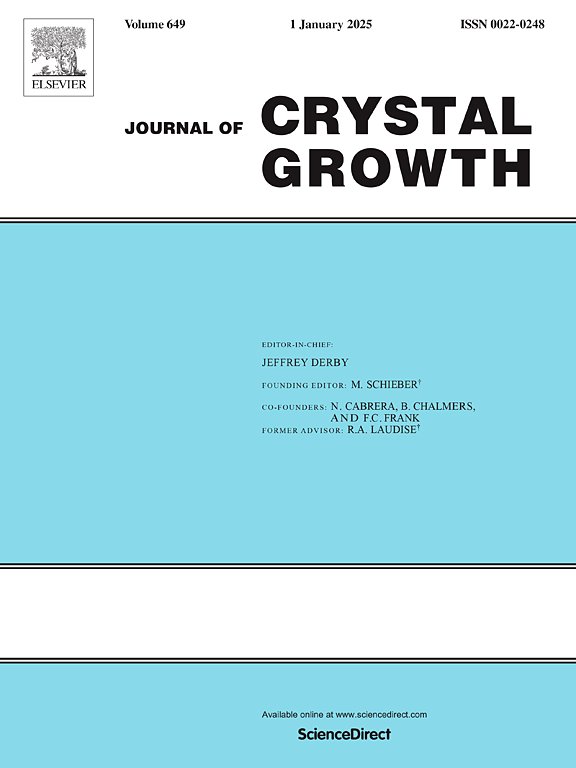"催化 "成核:对拟议理论的批判性审查
IF 1.7
4区 材料科学
Q3 CRYSTALLOGRAPHY
引用次数: 0
摘要
在工业规模的结晶过程中,二次成核是最重要的成核类型。在大多数情况下,这种现象可以充分解释为机械力使现有结晶体破裂的结果,这种效应的强度是过饱和度和搅拌强度的平稳函数。然而,在某些特殊情况下,会出现其他多晶体的结晶,并且/或者除了以超过过饱和度阈值的灾难性速度模拟原生成核外,不会出现任何成核现象。在本文中,我们回顾了已发表的有关后一种二次成核的理论,我们发现文献中对这些理论的解释相互矛盾。我们根据二次成核是通过体热动力学状态变量的局部偏差(间接效应)还是直接通过表面和生长单元的相互作用能(直接效应)介导的,将这些解释分为两大类。我们认为,第二类理论解释是不充分的,虽然我们无法为这一已被证实的实验现象找到结论性的、理论上一致的解释,但希望这篇综述能激发对这一难题的进一步研究。本文章由计算机程序翻译,如有差异,请以英文原文为准。
“Catalyzed” nucleation: A critical review of proposed theories
In industrial-scale crystallization, secondary nucleation is the most important type of nucleation. In most cases, this phenomenon can be adequately explained as the result of mechanical forces that break existing crystallites apart, the strength of the effect being a smooth function of supersaturation and stirring vigor. However, in some special cases, crystallites of other polymorphs appear and/or no nucleation occurs except at a catastrophic rate above a supersaturation threshold, mimicking primary nucleation. In this paper, we review published theories for this latter type of secondary nucleation, for which we find contradicting explanations in the literature. We divide these explanations into two broad classes, depending on whether the secondary nucleation is mediated through local deviations of the bulk thermodynamic state variables (indirect effects) or directly through the interaction energy of the surface and growth units (direct effects). We argue that theoretical explanations of the second type are insufficient and while we can find no conclusive and theoretically consistent explanation for this well-established experimental phenomenon, it is hoped that this review will stimulate further research into this puzzle.
求助全文
通过发布文献求助,成功后即可免费获取论文全文。
去求助
来源期刊

Journal of Crystal Growth
化学-晶体学
CiteScore
3.60
自引率
11.10%
发文量
373
审稿时长
65 days
期刊介绍:
The journal offers a common reference and publication source for workers engaged in research on the experimental and theoretical aspects of crystal growth and its applications, e.g. in devices. Experimental and theoretical contributions are published in the following fields: theory of nucleation and growth, molecular kinetics and transport phenomena, crystallization in viscous media such as polymers and glasses; crystal growth of metals, minerals, semiconductors, superconductors, magnetics, inorganic, organic and biological substances in bulk or as thin films; molecular beam epitaxy, chemical vapor deposition, growth of III-V and II-VI and other semiconductors; characterization of single crystals by physical and chemical methods; apparatus, instrumentation and techniques for crystal growth, and purification methods; multilayer heterostructures and their characterisation with an emphasis on crystal growth and epitaxial aspects of electronic materials. A special feature of the journal is the periodic inclusion of proceedings of symposia and conferences on relevant aspects of crystal growth.
 求助内容:
求助内容: 应助结果提醒方式:
应助结果提醒方式:


